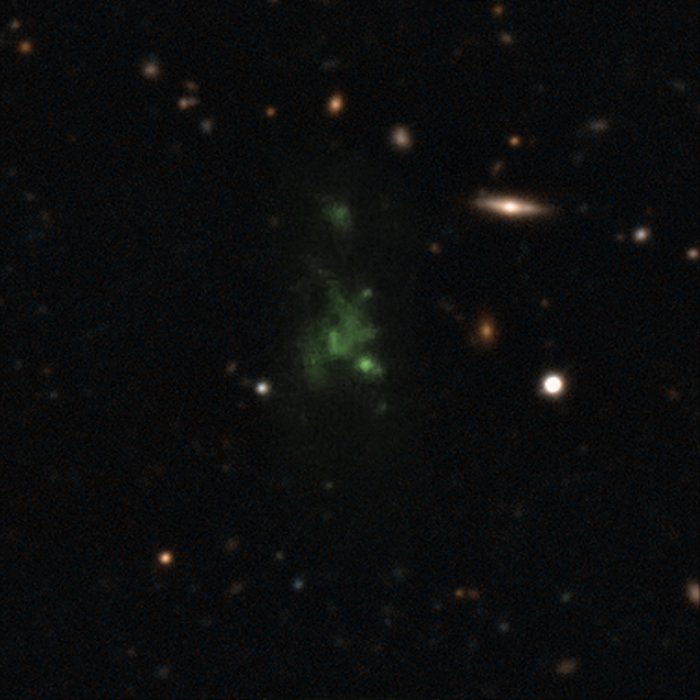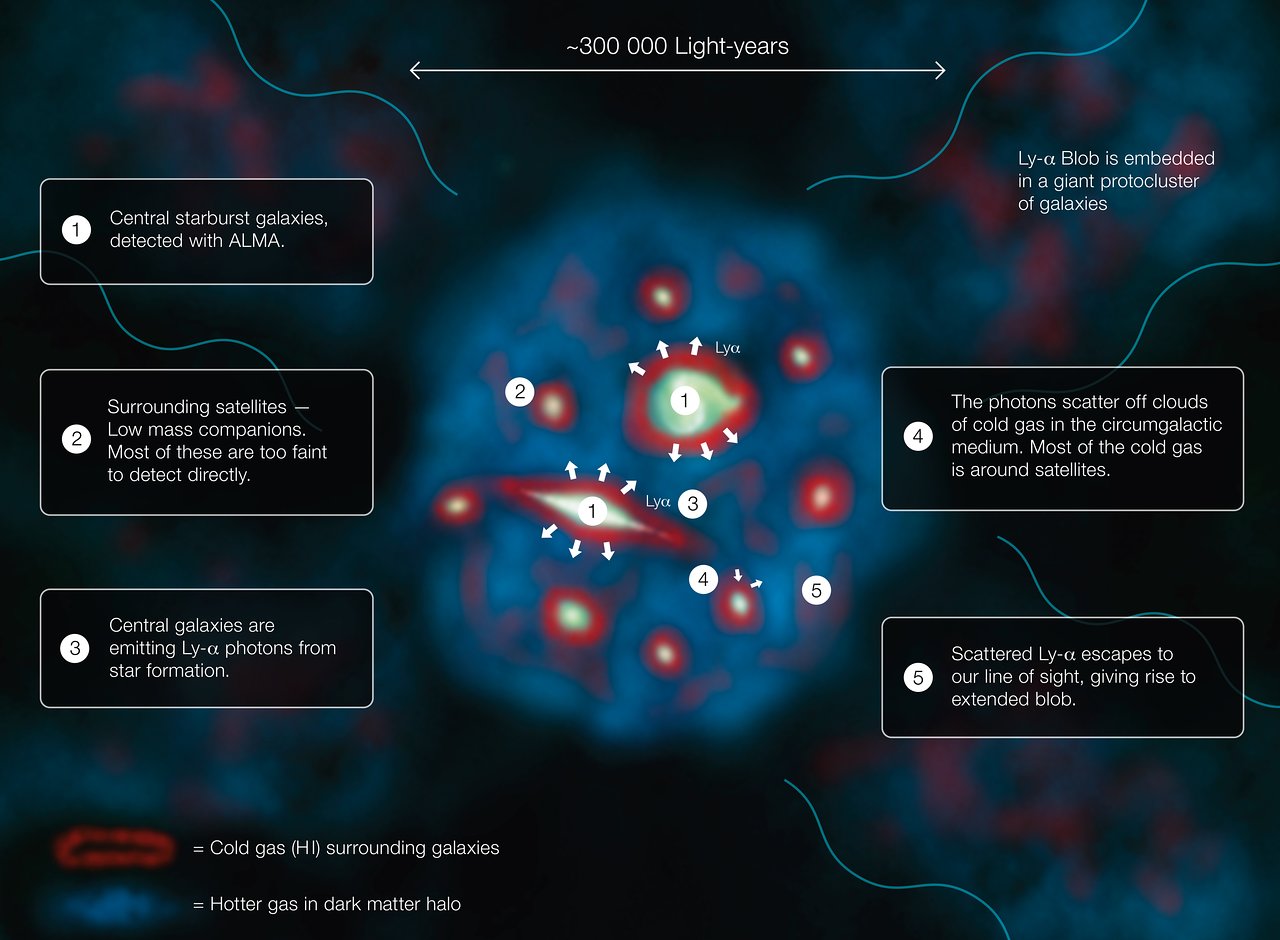It’s a happy day when astronomers figure out what’s up with an enormous space blob — and the answer doesn’t imply the immediate destruction of humanity.
A cosmological simulation of a Lyman alpha blob that traces the evolution of gas and dark matter from a central star-forming region. Image: J.Geach/D.Narayanan/R.Crain
You probably haven’t heard of SSA22-Lyman-alpha blob 1, but rest assured, telescope jockeys have been scratching their heads over it for years. Now, a team of astronomers has finally figured out what’s happening inside the blob that’s causing it to light up.
Lyman-alpha blobs, or LABs, are clouds of cold hydrogen gas spanning hundreds of thousands of light years in the most distant reaches of the known universe. They get their name from Lyman-alpha radiation, a distinct wavelength of UV light that’s emitted when electrons in hydrogen atoms jump from one energy state to another. Because LABs are found billions of light years away, their radiation signature is redshifted all the way down to the optical by the time it reaches our telescopes. To us, the blobs look like weird smudges of colour suspended on the edge of time.
SSA22-Lyman-alpha blob 1 (LAB-1) was the first such blob astronomers discovered, all the way back in 2000. To date, it remains on of the largest LABs ever spotted, but like most of its brethren, the blob’s tremendous distance — 11.5 billion light years from Earth — has made it difficult to study. Nevertheless, there’s reason to think this blob is special.

Lyman-alpha blob (LAB-1) pictured at the centre is one of the largest known objects in the universe. Because of its distance, the blob’s UV emissions get stretched on their journey through space and appear green to our telescopes. Image: ESO/M. Hayes
“[LAB-1] happens to be at the centre of a large protocluster — a region of the universe that’s very dense,” astronomer Jim Geach of the University of Hertfordshire told Gizmodo. “This region will eventually collapse into a large cluster. So the fact that we see this large blob close to the centre suggests it has something to do with the formation of large galaxies.”
To test that hypothesis, Geach and has collaborators turned to the Atacama Large Millimetre Array (ALMA), a radio telescope with unparalleled ability to resolve sub millimetre emissions, a form of long wavelength radiation used to study cool gases in faraway corners of space. Previously, other telescopes had detected sub millimetre emissions coming from the centre of LAB-1, but with ALMA’s greater seeing power, Geach was finally able to resolve the source. It turned out to be two.
“We found that this single [emission] breaks up into several clumps, corresponding to different galaxies,” Geach said.
In fact, the emission comes from to two large, central galaxies on the verge of smashing together. And there’s something else. Like hungry piranhas waiting to feast on the carnage, a swarm of smaller galaxies appear to be chilling around the perimeter. “We’re basically seeing the formation of the centre of a cluster of galaxies, right when all the action is taking place,” Geach said.
But wait, didn’t this intergalactic mosh pit look like nothing more than slimy green jelly for nearly 20 years? Geach thinks he knows why. Using a sophisticated computer model, he was able to reproduce the blob’s Lyman-alpha signature, if UV light produced during star formation was scattered off cold hydrogen gas in its surroundings.

Infographic explaining what happens when a Lyman-alpha blob shines. Image: ESO/J. Geach
Geach’s discovery, which has been accepted for publication in the Astrophysical Journal, has some major implications for astrophysics. If other LABs turn out to be powered by galactic cluster formation, too, then these blobs could offer an unprecedented window into the assembly of enormous structures in the early universe. They may also be one of our best opportunities to shed some much-needed light on dark matter.
“In our picture of galaxy formation, we think galaxies form in these large, dark matter haloes,” Geach said. “The stuff you see in galaxies is the stars, but a lot of the key astrophysics in galaxy formation is occurring in the immediate region around galaxies. Lyman alpha photons are scattering light in that dark matter, and giving us insight into its structure.”
The next step will be to observe other LABs with ALMA, and determine whether similar processes are playing out at the centre. Still, just knowing that LAB-1 can be explained by perfectly natural astrophysical processes is great news for Earthlings. If all that light was coming from an 11 billion year-old civilisation with a trillion fusion-powered warships, I’m not sure we’d be safe in this universe.
